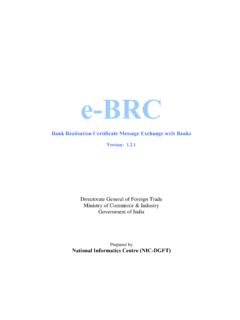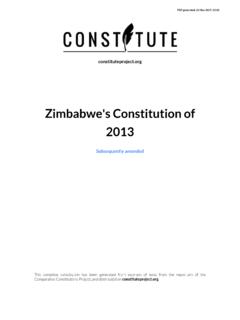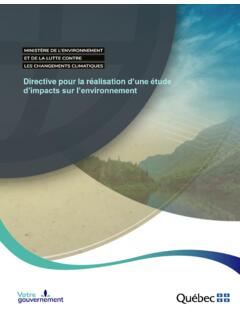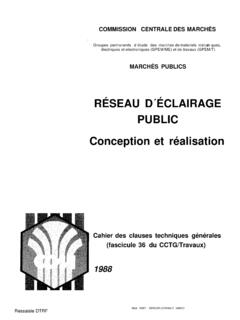Transcription of The engagement model - GOV.UK
1 The engagement model Guidance for maintained schools, academies (including free schools) and local authorities July 2020 2 Contents 1 Introduction 4 About this guidance 4 Expiry 4 Who is this publication for? 4 Main principles 5 2 What is the engagement model ? 6 Who should be assessed using the engagement model ? 7 How schools should use the engagement model 8 3 The areas of engagement 10 Exploration 10 realisation 10 Anticipation 11 Persistence 11 Initiation 11 Figure 1: how to use the engagement model to assess pupils 12 4 Effective use of the engagement model 13 How to conduct the assessments 14 When to conduct the assessments 15 Who should conduct the assessments?
2 16 How the engagement model links with other assessment approaches 16 The use of multimedia and technology 17 Video recordings and photographs 17 Other technology 17 Involving other professionals in the assessments 18 Recording the assessments 19 Moderation 21 Involving parents and carers in the assessments 21 5 Recognising progress and achievement 23 Progress of pupils not engaged in subject-specific study 23 Planning for progression 24 How to measure progress 25 3 How to measure the effectiveness of teaching 26 6 Accountability 27 What data needs to be submitted 27 Accountability to parents, governors and local authorities 27 Accountability to Ofsted 28 Annex: glossary 29 4 1 Introduction About this guidance This guidance sets out the statutory requirements for using the engagement model to assess pupils who are working below the standard of the national curriculum assessments and not engaged in subject-specific study at key stage 1 (KS1) and key stage 2 (KS2).
3 It describes best practice on how to use the engagement model , to support teachers and staff involved in assessing the progress of these pupils, and can be used by schools from September 2020. Schools will be required to use the engagement model from the 2021/22 academic year. The engagement model assessment arrangements apply to maintained schools, maintained special schools, academies (including free schools), pupil referral units, hospital schools and Ministry of Defence schools. They are not mandatory for non-maintained or independent schools.
4 Some of the statements within this guidance set out what schools are required to and must do . Where these statements are used, this only applies from the 2021/22 academic year when this guidance becomes statutory. Expiry This guidance is statutory from the 2021/22 academic year. This guidance was published on 23 July 2020 Who is this publication for? This guidance is for: teachers, school staff and all professionals involved in teaching and assessing pupils who are not engaged in subject-specific study, including subject coordinators, special educational needs coordinators (SENCOs), therapists and professionals from health and social services and the voluntary sector headteachers and senior leadership teams governors and trustees local authorities (LAs)
5 Parents and carers 5 Main principles The engagement model is an assessment tool that helps schools meet their duties in supporting pupils who are working below the level of the national curriculum and who are not engaged in subject-specific study. The model has 5 areas: exploration, realisation , anticipation, persistence and initiation. engagement identifies and celebrates all pupils progress, including linear and lateral progress, the consolidation and maintenance of knowledge, skills and concepts and the prevention or slowing of a decline in pupils performance, whilst recognising that a minority of pupils may have a regressive condition.
6 engagement can help schools reflect on how well the bespoke curriculum they offer to their pupils is helping them progress. It will not necessarily replace a school s existing plans, assessments and reporting systems, but adds value to them by helping schools assess pupils progress from a different angle. Effective use of the engagement model is based on regular observational assessment and reflective pedagogy. Assessments should be conducted by someone who knows the pupil well so that schools are able to identify existing educational barriers.
7 Progress through each of the 5 areas of engagement should be measured by identifying how established the pupil is against each of the areas of engagement . This will differ for each pupil according to their profile of needs as set out in their Education, Health and Care (EHC) plan. The model combines a formative and summative assessment approach. It should be used to assess pupils progress and development regularly throughout the year. This enables a continuous cycle of assess, plan, do and review to take place, which enables the pupils achievements and progress to be measured over time.
8 Schools are not required to submit data to the Department for Education (DfE) about the achievements and progress of each pupil. However, schools must report which primary-aged pupils are being assessed using the engagement model . Schools can use the engagement model across all key stages, including for pupils attending secondary schools, as the principles of engagement are equally relevant to pupils of all ages. However, there is no statutory requirement to do so, and in key stages 3 and 4 and in post-16 education, schools and colleges should ensure there is an emphasis on how their pupils acquired skills are preparing them for adulthood.
9 The model can be used as a tool for assessing why pupils who are currently working below the level of the national curriculum but are engaged in subject-specific study, may have begun to plateau or regress in their anticipated development outcomes. 6 2 What is the engagement model ? The engagement model is an assessment tool to help schools support pupils who are working below the level of the national curriculum and not engaged in subject-specific study. The engagement model was adapted from the 7 aspects of engagement , which was devised by Professor Barry Carpenter in the DfE-funded Complex Learning Disabilities and Difficulties project in 20111.
10 The engagement model was developed with the support of an expert group involving members of the Rochford Review and using the evidence from an evaluation of the 7 aspects carried out in 2018. The model recognises that engagement is multi-dimensional and breaks it down into 5 areas that allow teachers to assess: how well their pupils are being engaged in developing new skills, knowledge and concepts in the school s curriculum how effective the special educational provision is in empowering their pupils to progress against the agreed outcomes in their EHC plans and how effectively pupils are engaging with and making progress against these plans pupils achievements and progress across the 4 areas of need of the SEND code of practice (communication and interaction, cognition and learning, social.)

















